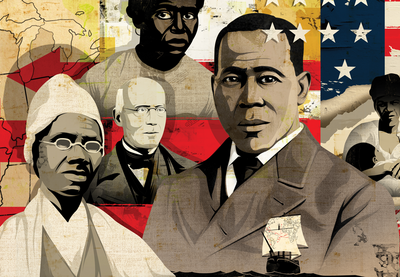Students will know slavery was the cause of the Civil War.
What Else Should My Students Know?
10.A People in the United States didn’t agree about slavery. Some believed it was wrong and should be ended; some didn’t mind it, but didn’t want more people to be enslaved in new places; and others wanted to spread slavery to new states. People in the last group decided to secede from‚ or leave‚ the United States so that they could continue enslaving people.
10.B The United States, or the Union, went to war to stop some states from leaving. This is called the Civil War.
10.C As the Union Army won victories, many enslaved people freed themselves by escaping to the free side; many also helped the Union Army, including by fighting.
10.D Indigenous people fought on both sides of the war. For many Native nations, the Civil War was a war fought in a country not their own about issues that had little to do with them.
10.E When the Union finally won the war, its leaders decided to end slavery.
How Can I Teach This?
- To lay the groundwork for the conflicts that resulted in the Civil War, students should also learn about peace and how it manifests in the classroom. They can discuss questions such as: “What is peace?” “Why do we want peace?” “What makes peace helpful in our classroom?” “If things are peaceful, who benefits?” Teachers can help students to consider the possible courses of action when people disagree, including conflict resolution.
- Using trade books such as Under the Freedom Tree and Pink and Say, students can learn about the clash between the Union and Confederate armies.
- Discussing the many enslaved people who escaped when the Union armies were nearby and assisted the Union will help students to understand that people did not want to be enslaved and greatly helped to end slavery.
- Teachers should lay the groundwork for understanding how subjugation of African Americans and Indigenous peoples continued after the Civil War.
- Not everyone was satisfied with the terms of surrender that ended the war. Beginning with examples of conflicts that are resolved even though both sides do not agree and drawing on earlier discussions of peace will help students to think about the idea of compromise. Students can discuss what happens when resolutions are met that don’t please both sides, or if there is not a solution that makes everyone happy.
- The many names for the Civil War create an opportunity to engage students in a discussion of the importance of language. Encourage students to consider the ways that what you call something reflects what you think it means. Students can examine the differences between calling the Civil War the “War Between the States,” “Freedom War,” “War for Southern Independence” or “War of the Rebellion.”

